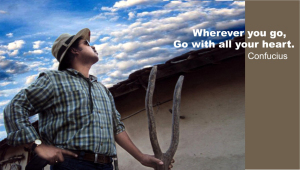Victor Ghoshe's Blog, page 4
April 27, 2016
Who am I… & what am I going to be?
I have been a shy boy in my early school days. I clearly remember during my 1st standard I was so in love with music, I forced my parents to get me into music….. guitar happened to my life since then.
When I was in the second standard, my teachers found that the only way to keep the entire class calm and silent in an off period was to get me to tell a story….. I remember one of our teachers would pick me up and make me sit on one side of her desk and as I would start telling my story – she would quietly unpack her bundle of answer papers and start correcting them. I think I am still telling that same story…. which just refuses to come to an end.
And that’s why I believe I could never grow up.
During the same time my parents discovered my indomitable knack for drawing and painting…. I would draw or paint for hours…. I would miss the outdoor sports sessions, I would miss fighting with my sister, I would miss almost everything to continue with my painting when I started one. And when I finish one I would immediately start another….. I would finish my drawing book, cover all our floor area, cover our interior then exterior wall, then our neighbour’s walls and finally on our neighbour’s floors…
I grew up…. with my music and my guitar; I grew up…. with my stories – some of which by then were trying to turn themselves into poems; and I grew up with my love for aesthetics and art. My friends said, ‘you don’t have to do everything – you schmuck. You’ll end up as a joke’; peers said. ‘You jack-ass, you wont be able to master a single thing !!’ Though my elderly relatives and some of my coaching class tutors were gentler. they said, ‘Focus boy, focus’.
But, I COULD NOT.
Not Emotionally, not philosophically – not even technically I could focus my mind to one thing. For me it was always a quick shifts and jumps from one field of creativity to another.
It was almost like playing Hu-tu-tu on a Nazca-Valey-like large creative-art-field-maze. making music this moment; painting on a piece of wood the next and writing a paranormal story some moments later.
But one thing was always there for sure… whatever I started I finished. whichever part of the day I started a creative work, by the end of the night or whenever I would go to sleep – before that I finished all my ventures that I had started or at least would bring them close to the finish-line and made sure that they all were ready to be auctioned in the market the next day after few fine touches (even if it was a fictitious market).
Well that surely was a strange though a unique thing about me…..
if I look back – barring a couple of quirky poems from my eleventh standard I actually have not done anything creative which could not be sold or which would not find a market – however fictitious it was. Though at that time I didn’t know many of my creative products already had specific markets or market slots ready for them. As a matter of fact even today when most of my creative works found their audiences or target groups and markets; many of my works do not have a defined market that I know of….. but in my heart I do believe that demands for those specific creative products do exist somewhere – in some universe – its only that I do not know about them.
As a trained painter and a researcher of global tribal art I never thought of creating something on those lines because coming from a wobbly middle class background with half baked education, for me initially it was always a job that could help me earn meals for my family. But in 2007 when I had to step down from the INR 4.5 Crore company that I co-founded for some dis-agreement, I took up painting come out of depression and surprisingly they started selling
I always wondered why do I like to sing to paint to play my guitar to write poems and stories
Interdisciplinary Creative Minds are unique they are programmed to study and respond to emerging practices that work across diverse disciplines in the creative arts, humanities and physical and social sciences. These minds’ programs are predicated on the understanding that the convergent nature of Aesthetics, information and communication technologies has facilitated the adoption of methods from across disciplines and that practitioners often require a deeper appreciation and experience of such methods. These minds find it easy to play with a wide range of disciplines and associated methods within a critical framework that encourages reflective experimentation.


April 22, 2016
True knowledge is not attained by thinking. It is what we are; it is what we want to be…
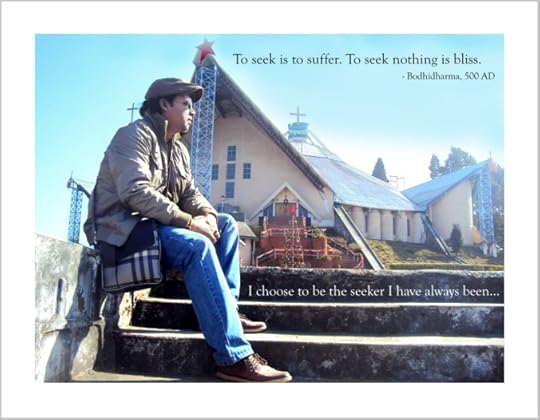
The ‘Mary Help of Christians Church’ Cathedral of Nagaland is located on Aradura Hills in Kohima. It is one of the biggest cathedrals in North East India. Its splendid architecture makes it one of the important landmarks of Kohima.
The unique design created by blending the traditional with the orthodox resulted in an architectural marvel. It is also home to the largest cross that is made of wood in the country. The magnificent crucifix is carved in wood and is 16 ft high, possibly one of the tallest wooden carved crucifixes in Asia.
The construction commenced in 1986 and the cathedral was mostly funded by the people of Japan who wished to construct a monument to the Japanese soldiers who died in the Battle of Kohima during the Second World War. For this reason, a quote is engraved in the environs of the cathedral:
“…It is with thankfulness that we heard that a Catholic Cathedral was built at Kohima, where Mass would be offered every morning in the memory of the fallen…”
There is also another inscription near the entrance to the building:
“When you enter in here, bring before the Lord all those who gave their life and who will give their all, for your safer and better Nagaland.”
Interestingly the cathedral was used as the venue for reconciliation meetings between the Japanese and British veterans who fought each other during the war.
Life is beautiful.
Victor Ghoshe
22.04.2016


April 18, 2016
Why we all love stories – Victor Ghoshe
 Image curtsey: mashable.com
Image curtsey: mashable.com
I believe and have always believed that stories are people’s superpowers, and I understand that our brain is hardwired to constantly search for them.
Some years back I had read this trivia somewhere that humans can go weeks without eating and days without drinking, but only roughly 35 seconds without their brains scanning the environment to create meaning out of what they see. In between my research work on Job Charnock (2010 – 2012) and writing my book THE JOB CHARNOCK RIDDLE (2012 – 2015) I took a one month break. During that time, I was reading everything I could…and one of the topics was – how a human mind functions.
That’s when, for me, what Hollywood knows about story structure intersected with the neuroscience of how the brain takes in, absorbs, and processes a story. I could figure out the connection between the structure of a story and how the brain absorbs and processes it. Here in this article I try to share with all my readers in a simple paragraph – what I have learnt through that period:
I have learnt – if you can use a STORY respectfully, you can create tremendous impact on things. You can create impact on the place where you live, where you work, when you market yourself or on people around you. As a caution, I always tell my friends to use a story for good, not for evil, because you can mobilize innumerable people in all possible directions with the right story.
When we hear a story, we automatically filter it through our experience as the hippocampus pulls up memories (The hippocampus is a major component of the brains of humans and other vertebrates. Humans and other mammals have two hippocampi, one in each side of the brain. It belongs to the limbic system and plays important roles in the consolidation of information from short-term memory to long-term memory and spatial navigation. The hippocampus is located under the cerebral cortex). While the brain tells itself a story, it tries to run non-stop scenarios to figure out the best response, and then acts upon that scenario. And it does that in milliseconds.
Nature gave people stories to draw their rapt attention. For my readers who are interested in reading more about this topic, I am happy to share about a book. This book is called Rapt: Attention and the Focused Life by Winifred Gallagher. STORY is the theme throughout the book. Its a great read – please go ahead and read the book for more information.
Finally I should mention, nature wants us – the human race to stay alive and create more of ourselves. Running scenarios (stories) in real time and in dreams help us figure out what to do next.
So let me tell you – even if you don’t wish to be a writer, stories do not leave you alone; not for a minute – they work inside your brain 24×7……
…. Its just that you don’t know about it.
Victor Ghoshe
Author of the Amazon best selling thriller – THE JOB CHARNOK RIDDLE


April 5, 2016
Knowing your readers is the most important thing for you – if you are a writer

Many of us writers try our best to produce high level works. We labour on character development, Scene development, dialogue and setting description through multiple drafts. We set all of these to a plot that aims to compel and enthral our readers.
Any historical novel, mystery or no mystery, requires extensive research. And for a significant number of writers, there is also a theme in the work, a message, perhaps even characters, that carry personal meaning.
Yet if you are writing a book for a commercial purpose, you have to send it out there and know that there is no possible way it will have a universal appeal or it will be universally liked. I personally feel writers are sensitive people who must grow thick skins when their books are in the market for sale.
Our reaction to reviews on Amazon and Goodreads is a kind of litmus test. While there are a few readers’ reviews that made me grumble, but largely I am grateful for the experience of learning what people think. To me taking some slaps on Amazon is a better alternative than refusing to read any reviews as a rigid person, determined not to listen to any criticism.
And so, as my first novel, THE JOB CHARNOCK RIDDLE receives every new review on Amazon or on Goodreads, I want to say ‘thank you’ to the readers who’ve taken the time to do this – think of a response, write it, and upload it on Amazon or on Goodreads
The two latest reviews of my thriller THE JOB CHARNOCK RIDDLE are also interesting like most of the other reviews since the book was published by Rumour India in January 2016; and I’m grateful for each one of them! Let me share the new two reviews as I have already talked about the previous ones in my other article.
5.0 out of 5 stars THE JOB CHARNOCK RIDDLE, By Mr Indrajit Chatterjee, March 2016
Welcome ‘The Dan Brown Of India’
‘An intriguing premise building into a scorching crescendo of a thriller, The Job Charnock Riddle is an extremely engaging spellbinder that took me in a whirlwind tour through varied vistas, leaving one grasping for breath, yet eagerly wanting to leap from one page to the next.
Interspersed with lyrical prose, local flavours and impeccable historical research, Victor Ghoshe delights the readers by the unorthodox and unconventional perspective of what is sometimes deemed as apparently known scenarios/facts. The author has the uncanny ability of revealing the subsequent plot in advance without losing the undivided attention of the reader.
This stallion is new in the thriller field, but is sure to win many a derby in the years to come.
5.0 out of 5 stars THE JOB CHARNOCK RIDDLE, By Ms Tumpa Roy, March 2016
I was so much into the story – I became a part of the team to solve the riddle and find the treasure
‘After a long time I have finished reading a novel so quickly because it is such an unputdownable book. The Job Charnock Riddle by Victor Ghoshe has an amazing blend of facts & fiction. While reading it, I also became a part of the team to solve the riddle and find the treasure.
Thanks to Victor Ghoshe for implanting the curiosity in my mind to know more about our own city Kolkata. The author’s note section in the book is of a real help for people like me who are interested in history.
I feel like visiting all the churches, graveyards & off course the forts mentioned in the book. Looking forward to read some more historical fictions from Ghoshe’.
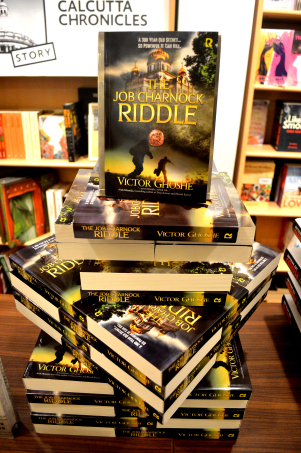 To people like Indrajit Chatterjee and Tumpa Roy I want to say – keep reading! Not just my novels, but as many as you have time for, and keep sharing…
To people like Indrajit Chatterjee and Tumpa Roy I want to say – keep reading! Not just my novels, but as many as you have time for, and keep sharing…
Victor Ghoshe
6.4.16


April 4, 2016
The business of storytelling and me


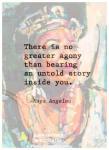
I have to say this —I’m an old school person. I still do not use a smart phone and my ten-year-old niece knows more about digital technology than I do. So in an effort to get a grip on internet marketing, I googled. I was reading about many writers, about their debut novels and their efforts to somehow ‘fool’ the Amazon bestseller list. But in the end I’m not quite sure if their ideas about marketing and sales have much to do with people who read a lot of books.
Having written and published some three books and worked in the field of international development communication in my time (for over nineteen years) I’ve learned that the one thing that people want in a book, e-book or otherwise is a good story and a good experience through that story. PERIOD.
My latest novel, THE JOB CHARNOCK RIDDLE is the first one in its series about the adventures and misadventures of a forty something archaeologist turned operative, a professor and adventurer named Eric Roy. I could write about Eric forever—he’s got an interesting past and he and his history graduate cousin, Aurin Roy have a real knack for getting themselves involved in adventures that hopefully take the armchair adventurer out of his or her air conditioned room and into a world of suspense and thrill.
Once popular writer Stephen King said that he writes what’s he’s afraid of. In the same way I write about the kind of things I’d never have the chance to do myself. In other words I write the kind of stories I’d always like to read. I believe many of the writers do that and that’s a good thing otherwise we never would have all those books and movies about gung ho adventurous heroes.
Anyway, I’m rattling on here; but my advice to anyone out there interested in writing and selling books is to concentrate on telling a good story and creating an experience for your readers. And as soon as you finish the current one, without fail start the next. The show should never stop – even in your own world. In your mind.
Victor Ghoshe
5.4.16


March 30, 2016
In the name of Social Branding. In the name of Change. Part 1
“We see the society; its people and its government as we wish to see them — in their simplest forms, and in the most convenient definitions.”
Abstract:
There has recently been a growing interest and literature in the application of brand management principles to countries, states, government agencies and political parties. The idea of applying branding to political parties is, however, challenging as political parties have long viewed themselves as ideologically driven. With the ascent of consumerism, which was encouraged by neo-liberal ideologies, the role of ideology has declined in recent years and political parties have become more marketing oriented. Given that brands are part of everyday consumer behaviour, it may be that political parties operate and voters make electoral choices similar to the way in which consumers choose commercial brands.
This paper demonstrates social brand campaigns which are developed by studying, identifying and understanding the needs of the communities as well as the government’s aspirations, has higher chances of success to bring positive changes.
In Bihar, however, it’s been observed that there is a tension for the quality of service delivery (be it health, education or infrastructure) which made the brand development process both critical and tough as any health campaign brand has to live up to its promises. The SRU had worked on the same philosophy and developed an umbrella brand for all the health initiatives in Bihar.
At the final stage of the brand development work for the State Health Society – Govt. of Bihar the team worked on the belief:
A social campaign brand has to be aligned with the government’s aspiration – and should also be community demand driven to bring positives changes in the society. It should also have an objective to ‘drive the market’ (by creating a dynamics) in a way that will support the future prosperity of the state or of the country.
This philosophy helped us to develop an umbrella campaign brand along with a series of sub-brands that would drive sustainable improvement in health service delivery in Bihar.
Acknowledgments
Engaging communities as well as government agencies is a core tenet of social branding for change and one that we embrace in all of our work at the SRU (the state RMNCH+A Unit, Bihar). In developing Branding Bihar – for Social Change (Engaging power and politics in promoting health and public value), our team — composed of Victor Ghoshe – Sr Communication Adviser, SRU; Dr Hemant Shah – Director, SRU – that small because what we were trying to do was something very new in the development scene in India…. and because no one else could imagine what good this would bring for the program and for all the programs to be designed in the future…. but then again the Director SRU and Mr Bhattacharya for the foundation had faith in our collective capacity to innovate.
Though we had worked with everyone in the State RMNCH+A team and with some people in the Bihar Technical Support Unit on this without telling them. we have collected views, downloaded knowledge, understood political interests form many in Bihar. Through continued collaboration with all the Development Partners working in Bihar to better our communities through social change, Officials from the State/District level government, different Communities from different social strata. Every section of people had as many ideas and answers as we did, and for over the initial 100 days or so, we have downloaded and compiled all of those thoughts to keep the branding conversation open and to reach out to a product that suits all and everyone in Bihar.
With the collective power of knowledge from every segment of people, we knew we could communicate well and develop something right for a New Bihar.
From the paper written by Victor Ghoshe on Social Branding in Public Health (Bihar, India context)


March 14, 2016
I create – not to leave a legacy…
I create – not to leave a legacy, as I won’t be here to see it anyway, but to be of use.
I make music, I write, I paint…. I talk funny….I do all of these things to be of use.
By creating I feel good about myself, plus I give something back to the society, to the people to use or enjoy.
Victor Ghoshe


January 21, 2016
The Telegraph covers my book launch by veteran actor Sri...
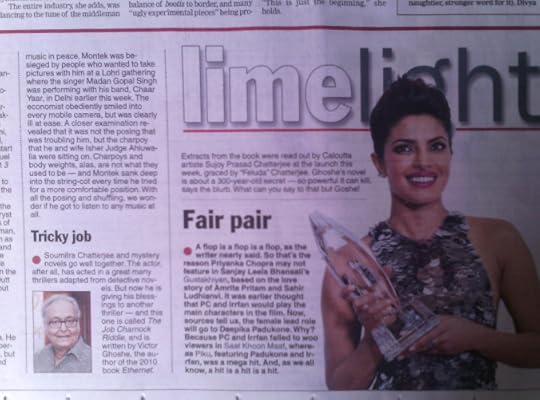
The Telegraph covers my book launch by veteran actor Sri Soumitra Chatterjee bestoed with the Dadasaheb Phalke award, in their Sunday LIME-LIGHT section on 17 Jan 2016


January 16, 2016
Veteran Actor Sri Soumitra Chatterjee Launches THE JOB CHARNOCK RIDDLE – by Victor Ghoshe in Kolkata
The new book is part fact, pact fiction that dwell in both the past and present times, trying to bridge a a gap between the two.
Also present in the launch ceremony were film maker Anik Dutta, actor-elocutionist Sujoy Prasad Chatterjee and singer Lagnajita Chakraborty.
Soumitra, who had acted in a movie that dealt with Charnock, said, We are evidently aware of Job Charnock, who he was and the role he played in the expansion of the British Empire in India.
Soumitra also regaled the audience with a spooky story based on a real incident. He recalled the day he worked at the All India Radio and how he had once met a ghost, who wore traditional costume resembling the Victorian era.
I still dont know if ghosts exists, but Im scared of them, the Dada Saheb Phalke awardee said.
Speaking about the subject of his book, the author said, I was reading a book in 2010, when it caught my attention that the treasury of Sayesta Khan was looted. It is well documented. Then cut a few years later, Job Charnock emerged as a powerful man. I was intrigued as to what happened in the meantime, why isnt there any information on it. So i started writing a plot surrounding it.
The author also spoke about a second story in the book. Ghoshe said, Yes there is a second story in this book which is equally strong and full of paranormal things and religious relics.
About his favourite genre, Soumitra said, I love reading down to earth thrillers, books that can deliver a sense of nature and surrounding.
The author said that working as a communication specialist have shaped him into what he has become today.
Every author learns from his job. People add value to your life, we learn from them too.
When asked if books in the form of paper will sustain in the near future, he said, This charm has to stay on, at least for the next 100 years.
The evening was not void of drama either as Anik Dutta took up the micro phone and asked Ghoshe not to commit to too many people as he is likely to make a movie out of it.
(Report by Sudipto Maity)
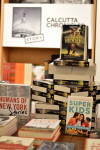
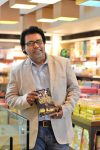
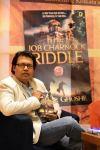
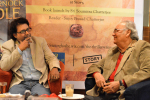

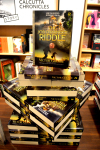



August 27, 2015
2011 – in a tribal village in southern Rajasthan, India
Campaigned for Saman Bachpan Abhiyan – a child rights campaign for the tribal children of Southern Rajasthan through Udaipur, Jaipur, Jodhpur, Dungarpur of Rajasthan and in New Delhi.
Along with developing the media & communication strategy of the campaign I had wrote songs and performed them to mobilize masses and the media through most of the towns and cities mentioned above. the campaign intrigued over 5000 articles by the media and mobilized over 20,000 people within a period of less than a year. The issues raised by the campaign were taken up by the opposition party and finally addressed by the state government of Rajasthan.



